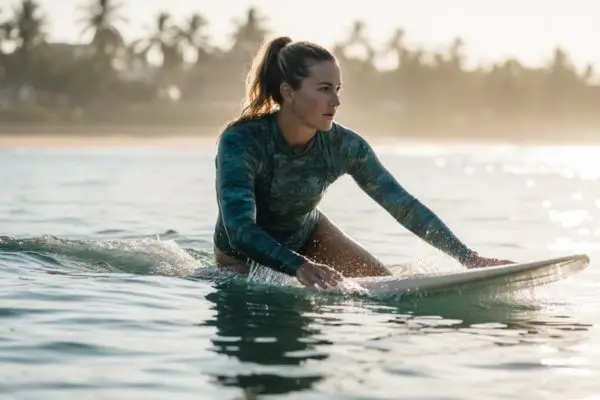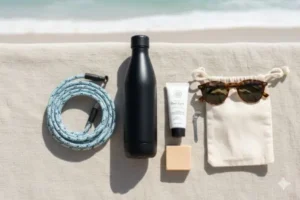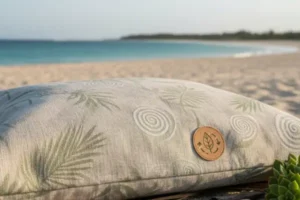Surfing is more than a sport; it’s a lifestyle connected deeply to the ocean. For women surfers who care about the environment, choosing eco-friendly gear is one of the best ways to reduce impact while enjoying the waves. Among the essentials, rash guards play a vital role. They protect the skin from sun exposure, board rashes, and even minor stings, but traditional options are often made with synthetic fabrics that harm the planet. Thankfully, eco rash guards now offer a sustainable alternative.
This guide explores what makes a rash guard eco-friendly, why it matters for women surfers, and how to find the right one for your surf sessions.
Why Choose Eco Rash Guards?
Rash guards are a standard part of surfwear, but many are made with polyester or nylon, materials derived from petroleum that contribute to ocean pollution. Eco alternatives change the game by prioritizing both performance and sustainability.
- Environmental Benefits: They often use recycled plastics, organic fabrics, or biodegradable materials.
- Health Advantages: Non-toxic dyes and UV-protective fabrics minimize exposure to harmful chemicals.
- Longevity: Sustainable gear is designed to last longer, reducing waste from frequent replacements.
For women surfers, these benefits combine practical protection with the satisfaction of knowing each choice supports healthier oceans.
Key Features of Eco Rash Guards
Not all products labeled “eco” are truly sustainable. Here are the essential features to look for:
1. Recycled Fabrics
Many eco rash guards are made from recycled polyester (often sourced from plastic bottles) or regenerated nylon (such as ECONYL®). These fabrics perform just as well as traditional options but reuse existing waste.
2. Organic Cotton Blends
Some brands combine organic cotton with stretchable fabrics to create comfortable, breathable rash guards. These are ideal for women who surf in less intense conditions or who prioritize natural fibers.
3. Non-Toxic Dyes
Conventional dyeing processes can release harmful chemicals into waterways. Look for brands that use water-based or plant-based dyes to reduce environmental damage.
4. UV Protection
Eco rash guards should provide at least UPF 50+ sun protection, keeping the skin safe without relying on chemical sunscreens that may harm coral reefs.
5. Durability
A longer-lasting product is inherently more sustainable. Reinforced stitching, stretch recovery, and chlorine resistance are features worth considering.
Step-by-Step: Choosing the Right Eco Rash Guard
Step 1: Define Your Surfing Needs
- For warm climates: opt for lightweight, short-sleeve designs.
- For cooler waters: choose thicker, long-sleeve versions with added insulation.
Step 2: Check the Material Label
- Look for recycled polyester, ECONYL®, or organic cotton blends.
- Avoid pure virgin polyester or nylon.
Step 3: Prioritize Comfort and Fit
- Women-specific designs often provide better shaping, minimizing discomfort.
- Test flexibility by stretching the fabric — it should move with your body.
Step 4: Investigate Brand Transparency
- Reputable companies share details about their supply chain, certifications (like GOTS or OEKO-TEX), and sustainability practices.
Step 5: Consider Longevity
- Invest in higher-quality pieces rather than cheaper fast-fashion alternatives that wear out quickly.
Top Brands Leading the Way
Several surf brands have embraced sustainability and now offer eco rash guards designed specifically for women:
- Patagonia: Known for using recycled fabrics and fair labor practices.
- Roxy Eco Collection: Combines style with recycled polyester and water-based inks.
- Outerknown: Founded by pro surfer Kelly Slater, this brand focuses heavily on eco-friendly surf apparel.
- Salt Gypsy: A women-led surf brand that emphasizes ethical production and sustainable fabrics.
Exploring these brands can give you confidence in finding products that align with both your surfing needs and environmental values.
Care Tips to Extend Lifespan
Owning an eco rash guard isn’t enough — caring for it properly ensures it lasts longer, reducing waste even further.
- Rinse After Every Use: Saltwater, chlorine, and sand can break down fabrics.
- Avoid Harsh Detergents: Use mild, eco-friendly soaps to preserve material integrity.
- Air Dry Only: Heat from dryers can weaken elasticity; hang in the shade instead.
- Patch Small Tears Quickly: A simple stitch can extend usability by years.
Why It Matters for Women Surfers
For many women, surfing is not just about riding waves but about creating a balanced, mindful connection with nature. Wearing eco-friendly gear like rash guards becomes part of a larger commitment to living consciously. Every purchase sends a message to the industry, encouraging more brands to move toward sustainability.
Women surfers have the power to lead this shift by embracing eco gear and inspiring others to do the same. Choosing an eco rash guard may seem like a small step, but it contributes to a larger movement protecting the oceans we rely on.
A Deeper Connection with the Ocean
Surfing is about more than technique or equipment; it’s about respect for the sea. When women surfers put on eco rash guards, they’re not just protecting their skin — they’re aligning their passion with responsibility. Each choice to go green in the water adds up, creating a ripple effect of positive change.
Next time you prepare for a surf session, consider the story behind your gear. With eco rash guards, you don’t just ride the waves; you honor the ocean that makes every ride possible.




